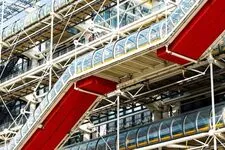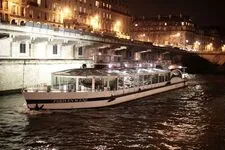Everything you need to know about the Notre Dame Cathedral in Paris
Timeless symbol of Paris, the Notre-Dame Cathedral is much more than a masterpiece of Gothic architecture. For over eight centuries, it has fascinated with its grandeur, its history, and its central role in French culture. After the dramatic fire of 2019, the cathedral is reborn and finally reopens its doors in 2024, restored and enhanced.
In this article, discover everything you need to know about Notre-Dame de Paris: its fascinating history, the stages of its reconstruction, practical information for your visit, and events not to be missed.

Before diving into the history of the cathedral, feel free to check out our guide on the best must-see monuments in Paris, which shape the heritage of the capital.
History of Notre-Dame de Paris: An Unmissable Heritage
The Cathedral of Notre-Dame de Paris was born in the 12th century, under the impetus of Bishop Maurice de Sully. Built between 1163 and 1345, it embodies the rise of the Gothic style, with its immense stained glass windows, majestic rose windows, and revolutionary flying buttresses.
The construction and major milestones in its history
Over the centuries, it has gone through periods of glory and decline:
- 1804: Coronation of Napoleon Bonaparte in the presence of Pope Pius VII.
- 19th century: Rescue by Victor Hugo with Notre-Dame de Paris and restoration by Viollet-le-Duc.
- 20th century: Celebration of the Liberation of Paris in 1944, becoming a national symbol.
The fire of April 15, 2019: A historical tragedy
On April 15, 2019, a fire ravaged the roof and spire of Notre-Dame. A global shock that triggered an immediate mobilization for its reconstruction. Millions of euros were raised and an army of craftsmen set to work to bring the cathedral back to life.
This tragedy reminds us of the importance of heritage and the necessity to preserve iconic sites like Île de la Cité, the true historical cradle of Paris, where Notre-Dame has stood for centuries.
The restoration of Notre-Dame de Paris: A titanic project
After the fire in 2019, the reconstruction of Notre-Dame required colossal work mobilizing artisans from around the world.
The technical challenges and archaeological discoveries
The goal: to faithfully restore the cathedral, while integrating modern techniques to protect it from future risks.
Among the major challenges:
- The reconstruction of the spire: rebuilt identically according to the plans of Viollet-le-Duc.
- The reinforcement of the vaults: stabilized thanks to a wooden framework reconstructed in the traditional way.
- The archaeological discoveries: excavations beneath the cathedral revealed medieval remains, including a 13th-century jubé and historical sarcophagi.
Reopening of the cathedral: What you need to know
After five years of work, the reopening of Notre-Dame de Paris took place on December 7, 2024. The interior has been restored, the spire resurrected, and the new works (including contemporary stained glass) now offer visitors a unique experience.
However, some aesthetic decisions, such as the integration of modern works, have sparked debates among heritage defenders. This modernization recalls other jewels of the capital, such as the Sainte-Chapelle, famous for its sublime stained glass and meticulous restoration.
All the information to visit Notre-Dame de Paris in 2026!
Practical information for the visit
Upon its reopening, the cathedral will regain its place among the most visited monuments in the world. Here’s what you need to know before going there:
- Opening hours: every day, from 8:00 AM to 7:00 PM.
- Ticketing: entry to the nave will remain free, but tickets will be required to visit the towers and the crypt.
- Access: metro Cité (line 4), RER B and C at Saint-Michel - Notre-Dame, several bus lines.
What to see inside the cathedral?
Once inside, visitors will be able to admire:
- The restored stained glass, including the famous rose windows from the 13th century.
- The treasure of Notre-Dame, housing precious relics and liturgical objects.
- The grand organs, which will resonate again during masses and concerts.
Climbing the towers of Notre-Dame
For an even more immersive experience, it will be possible to access the towers of the cathedral. The ascent allows you to admire a breathtaking view of Paris, with a stunning panorama of the Seine, the Eiffel Tower, and the Pont Neuf, the oldest bridge in the capital.
Access to the towers is only by reservation, with limited slots to preserve the structure and ensure an optimal experience for visitors.
""
Upcoming Events and Masses at Notre-Dame
With its reopening in 2024, Notre-Dame de Paris is becoming a major cultural and spiritual center again. Here are the upcoming events at the cathedral!
Concerts and Cultural Events Program
Many events are planned to celebrate this long-awaited return:
- Organ and choir concerts: the grand organ, carefully restored, will regain its voice for unique performances.
- Temporary exhibitions: retracing the history of the cathedral and discoveries made during the restoration.
- Projections and light shows: immersive presentations telling the story of Notre-Dame through time.
These events will enrich the experience of visitors, just like those organized at other iconic sites in the capital, such as the most romantic places in Paris, which offer a different and magical perspective on the city.
Masses and Religious Celebrations
The Notre-Dame Cathedral remains primarily a place of worship, and the resumption of religious services is a key step in its rebirth. Upon reopening, the faithful will be able to attend:
- The first official mass, celebrated by the Archbishop of Paris in December 2024.
- Sunday and daily masses, accessible to parishioners as well as tourists.
- Major religious celebrations, especially at Christmas and Easter, which will attract thousands of worshippers.
The cathedral will also resume its role in the spiritual life of the capital, welcoming pilgrims and visitors from around the world in a renovated and enhanced setting.
Around Notre-Dame: What to Do After Your Visit?
Notre-Dame de Paris is located in the heart of Île de la Cité, one of the oldest and most fascinating neighborhoods in the capital.
Explore Île de la Cité and Its Historical Treasures
After your visit, be sure to discover:
- Sainte-Chapelle, with its breathtaking stained glass depicting biblical scenes.
- La Conciergerie, the former prison where Marie Antoinette was held.
- The banks of the Seine, perfect for a romantic stroll or a terrace break.
If you want to deepen your exploration, check out our guide on Île de la Cité, which is full of anecdotes and must-see addresses.
Where to Eat and Have a Drink Nearby?
After immersing yourself in the history of Notre-Dame, nothing beats a gourmet break to enjoy the Parisian charm. Just a few steps from the cathedral, you will find:
- Traditional bistros, offering typically French dishes.
- Refined tea rooms, perfect for enjoying a coffee and a pastry.
- Restaurants with a view of the Seine, ideal for a romantic dinner.
The areas around the cathedral are also the perfect starting point for a cruise on the Seine or a walk to Pont Neuf, which offers a magnificent view of the island and its monuments.
Activities in the Surroundings

Vedettes du Pont Neuf

Centre Pompidou - Beaubourg

Big Bus Paris





